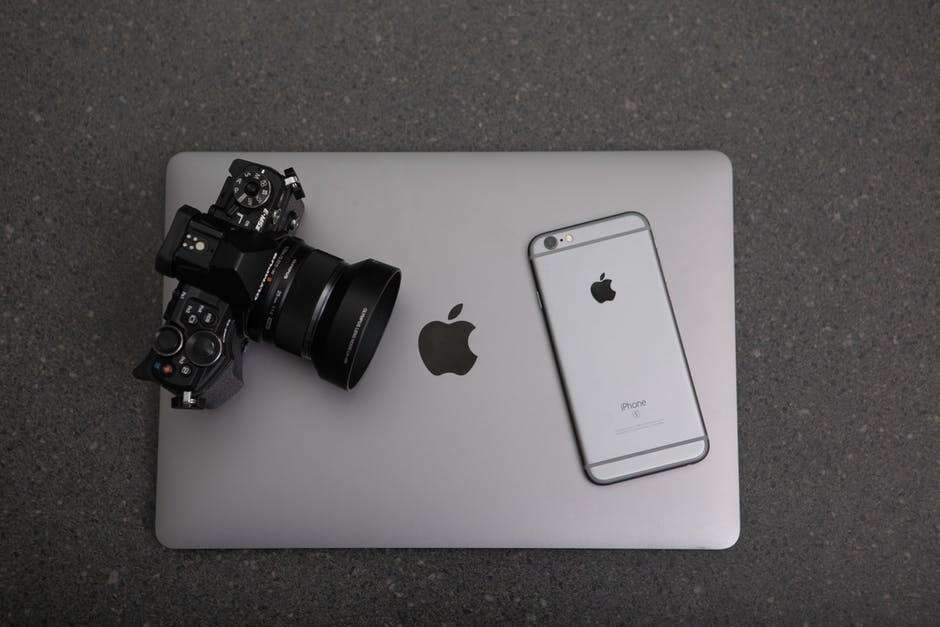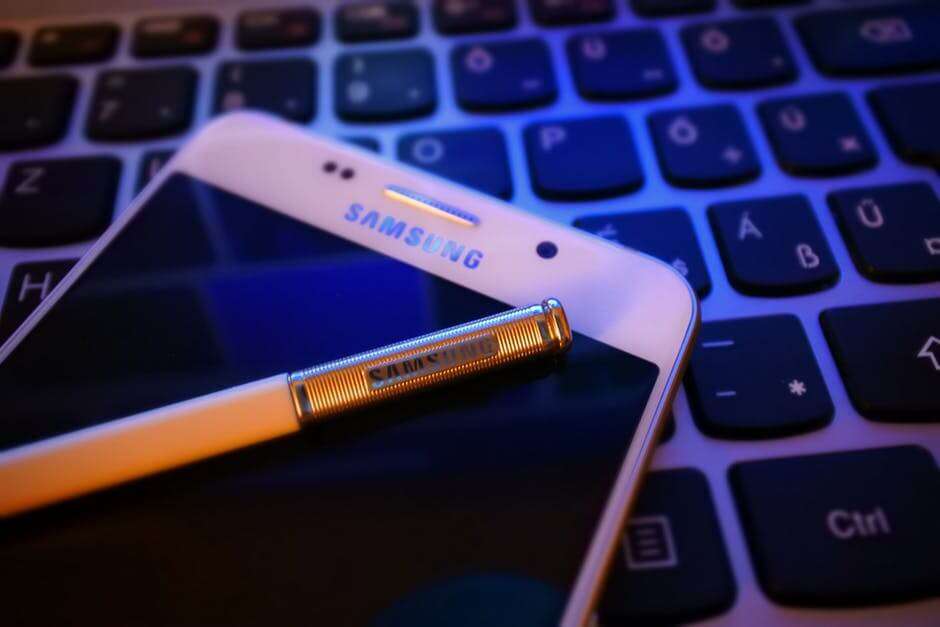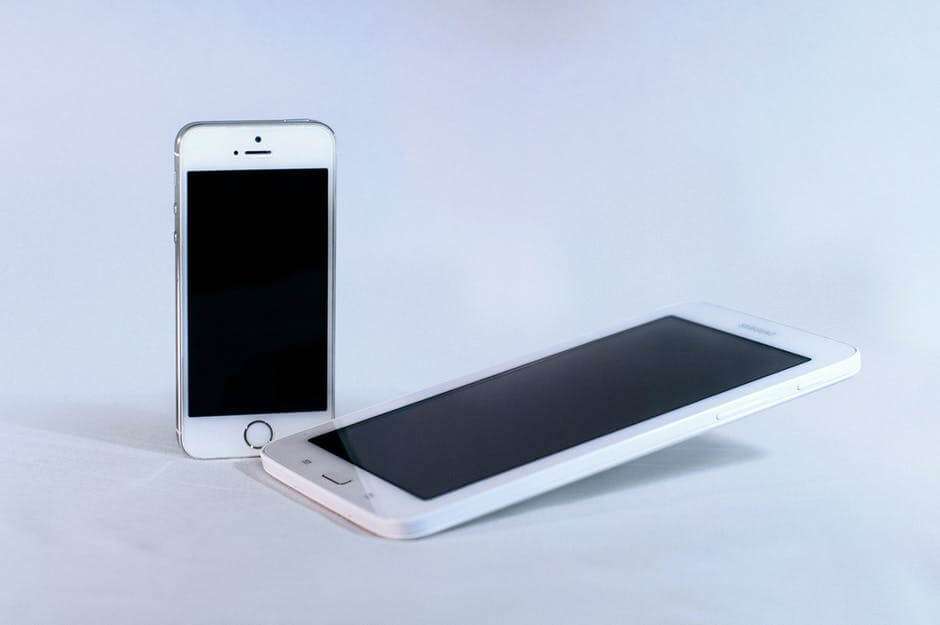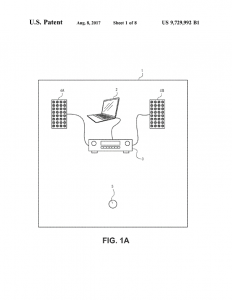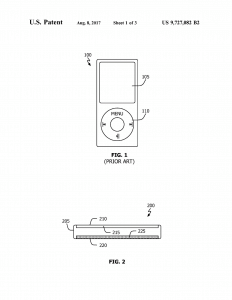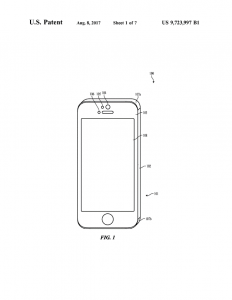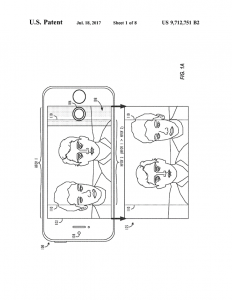Apple was founded by Steve Jobs, Steve Wozniak, and Ronald Wayne in April 1976 to develop and sell personal computers. It was incorporated as Apple Computer, Inc. in January 1977, and sales of its computers saw significant momentum and revenue growth for the company. Within a few years, they had hired a staff of computer designers and had a production line. Apple Inc. is an American multinational technology company headquartered in Cupertino, California that designs, develops, and sells consumer electronics, computer software, and online services. The company’s hardware products include the iPhone smartphone, the iPad tablet computer, the Mac personal computer, the iPod portable media player, the Apple Watch smartwatch, and the Apple TV digital media player. Apple’s consumer software includes the macOS and iOS operating systems, the iTunes media player, the Safari web browser, and the iLife and iWork creativity and productivity suites. Its online services include the iTunes Store, the iOS App Store and Mac App Store, Apple Music, and iCloud.
Apple is the world’s largest information technology company by revenue, and the world’s second-largest mobile phone manufacturer after Samsung. In February 2015, Apple became the first U.S. company to be valued at over US$700 billion. The company employs 116,000 full-time employees as of October 2016 and maintains 498 retail stores in 22 countries as of July 2017. It operates the iTunes Store, which is the world’s largest music retailer. As of January 2016, more than one billion Apple products are actively in use worldwide.
Apple’s worldwide annual revenue totaled $215 billion for the 2016 fiscal year. The company enjoys a high level of brand loyalty and has been repeatedly ranked as the world’s most valuable brand. However, it receives significant criticism regarding the labor practices of its contractors and its environmental and business practices, including the origins of source materials.
Why Apple was named Apple?
The name Apple was to cause Apple problems in later years as it was uncomfortably similar to that of the Beatles’ publisher, Apple Corps, but its genesis was innocent enough. Speaking to Byte magazine in December 1984, Woz credited Jobs with the idea. “He was working from time to time in the orchards up in Oregon. I thought that it might be because there were apples in the orchard or maybe just its fructarian nature. Maybe the word just happened to occur to him. In any case, we both tried to come up with better names but neither one of us could think of anything better after Apple was mentioned.”
According to the biography of Steve Jobs, the name was conceived by Jobs after he returned from apple farm. He apparently thought the name sounded “fun, spirited and not intimidating.” The name also likely benefitted by beginning with an A, which meant it would be nearer the front of any listings.
The Apple Logo
There are other theories about the meaning behind the name Apple. The idea that it was named thus because Newton was inspired when an Apple fell out of a tree hitting him on the head, is backed up by the fact that the original Apple logo was a rather complicated illustration of Newton sitting under a tree.
Later the company settled on the bite out of an Apple design for Apple’s logo – a far simpler logo design. These logos are probably the reason for other theories about the meaning behind the name Apple, with some suggesting that the Apple logo with a chunk taken out of it is a nod at computer scientist and Enigma code-breaker, Alan Turing, who committed suicide by eating a cyanide infused apple.
However, according to Rob Janoff, the designer who created the logo, the Turing connection is simply “a wonderful urban legend.” Equally the bite taken out of the Apple could represent the story of Adam and Eve from the Old Testament. The idea being that the Apple represents knowledge.
6 Key Strategies That You Must Learn From Apple’s Marketing
Coming off the heels of yet another successful Apple launch debut, it’s increasingly clear that Apple is on top of their game in a way like no other. Which other company could turn an ordinary press conference into a live global event?
The secret lies beyond their product line and design standards; it lies beyond even Steve Jobs’ emphatic adherence to Apple’s core philosophy, which is that the user doesn’t always know what they want.Looking at the company’s latest product lines and revenue models, I’d be a fool to call them anything less than what they are, which is:
A design firm
• A media platform
• A publishing company
• A software powerhouse
• A computer builder
1. Ignore Your Critics
As an entrepreneur, you’ll hear a lot of people tell you that you need to reach out and figure out what people want, which means listening to your critics, often times more patiently than you’d like. Apple decides to flip the script and instead focus on building what they want to build, no matter the perceived cost. When Steve Jobs debuted the iPad, the critics stood in line, throwing every insult they could muster. The critics said that the iPad would fail. The numbers say otherwise. Each and every time Apple decided to innovate, they were laughed at. They prevailed anyway.
2. Turn the Ordinary into Something Beautiful
For quite some time, PC fans enjoyed the work of buying their own parts and building their own tower systems. At the same time, PC makers were building standard hardware for standard applications.Apple would have none of that.They’ve been pioneering not only the features of standard operating systems and computer systems, but simultaneously reinventing the design standards as well. As a result, we have the gorgeous iMac, the beautiful new Macbook Air, and who could forget, the amazing iPhone 4. Where others focus on one aspect of the equation, Apple focuses on the entire product, and it shows.
3. Justify Your Price
We’re in a time when pricing strategies are all over the place. People don’t know what to charge, and in many cases, prefer to race to the bottom instead of pricing strategically to a market that can bear the cost. Once more, Apple ignores the standard by not only pricing their technology more than 2x what their competitors charge, but doing so without blinking.
How can they get away with it?
1. They build beautiful products for an audience that loves them passionately.
2. They justify their price with features and benefits that can’t be matched.
No software is more intuitive, no product more valuable than the Apple product. Any other smartphone looks like it was developed by rookies when compared to an iPhone 4. You simply cannot compare the two. Critics will play on the fact that the core features are the same, and they might be, but that’s not the point. The point is that Apple is the Rolls Royce of the technology and design world, and their customers will gladly pay a premium because of it.
4. Communicate in the Language of Your Audience
It makes no sense to talk about things like megabytes, gigahertz, and processing power to customers that simply don’t care about technical jargon. Take a look at any Apple product page and you’ll find that though they do discuss product specifications and technical information, it’s hidden behind the benefits that their audience is truly after. Instead of display resolution, you’ll see phrases like “edge to edge glass,” “retina display,” and “LED backlighting. Sure, the jargon is there for those that need it, but it’s presented in a way that makes you want to learn about megapixels, rather than shy away from them. The art is in the copy, not in the features.
5. Extend the Experience
Have you ever heard of an unboxing? I hadn’t either until recently, when I learned that not only was I not the only one keeping Apple packaging post-sale, but that there are legions of people that record the actual process of unwrapping their newly purchased Apple products.
Do a search on YouTube and you’ll find hundreds of Apple unboxings, each from different users from across the globe. It’s pretty crazy right? No one tells these people to video their experience, but they do it because the process is so Zen that you can’t help not to.
Apple does this by making sure that the experience doesn’t end at the cash register. They take great care in designing a user experience from browsing to unwrapping, which relies on incredible packaging and installation procedures.By reducing installation to the lowest common denominator, they make buying new products a snap, and by spending as much time on designing packaging as they do on the products themselves, they’ve ensured that the box matches what’s inside. As a result, they’ve built an experience that is nearly impossible to match.
6. Build a Tribe
It’s no secret that Apple has built one of the most hardcore fan bases of any product and of any time. There’s a reason they’re called “fanboys.
But who cares, right? Most of the chatter is out of jealousy more than anything, but Apple doesn’t really care. They know that they serve an elite audience, and rather than back away from that fact, they embrace it.
Apple’s Systemic Approach to Innovation
Apple is widely considered as the #1 innovative company in the world. The company’s innovation strategy involves terrific new products and innovative business models.
The company delivers consumers with a succession of presents – great software in fabulous hardware in beautiful packaging (“really good ideas wrapped up in other really good ideas,” as Michael Lopp, senior engineering manager at Apple puts it). Apple also pioneers into a new business spaces and creates new market niches. The company created game-changing innovations such as the iPod, iTunes, iPhone, and iPad.
Apple innovation leaders think in terms of platforms and pipelines and relentlessly push the pace of innovation. Competitors that chase Apple’s latest release find themselves behind when just a few months later Apple introduces its latest and greatest offering.
Innovative Business Models
Apple doesn’t just focus on building innovative and beautiful products. It builds innovative business models too. The iPod and iPhone would not have had nearly as much impact if they hadn’t been matched with iTunes and the App Store respectively.
Apple’s Innovation System
Apple’s commitment to innovation is cultural, not process driven. The most successful products at Apple were started with only a few people with no formal structure or hierarchy and little corporate oversight. Yet, “to turn really interesting ideas and fledgling technologies into a company that can continue to innovate for years, it requires a lot of disciplines,” advised Steve Jobs. Apple has built an effective innovation system to harnesses creativity in its people, stimulate new ideas, streamline the design process, and launch successful, profitable new innovations.
What is IP Strategy?
In any discussion of IP strategy, the first thing that we must do is to recognize that IP strategy is a part of corporate strategy. To understand the objective of IP strategy then, it is helpful to first discuss the objective of corporate strategy.
As with IP strategists, there is no clear consensus among corporate strategists about the objectives of corporate strategy. That said, most corporate strategists would include among their objectives the phrase “sustainable competitive advantage” or other words that mean approximately the same thing. Whatever words you would use to describe your company’s strategic objectives, we can be pretty confident that they have something to do with sustainability, competition, and advantage.
Stated another way, corporate strategy is the development of a course of actions that will enable the company to generate a sustainable stream of profits. A successful strategy will allow the company to achieve ongoing profits that are greater than their competitors’ profits.
Consider for a moment the basic formula for profit:
π= (P X Q) – C
In words, this reads: Profit (π) equals revenue (Price times Quantity) minus Costs.
Corporate strategy then is the development of a course of actions that enables a company to sustainably realize higher prices than competitors (P), increase its market share (Q) and/or maintain lower costs (C) than the competition. As a contributor to corporate strategy, IP strategy must pursue the same objectives. A successful IP strategy must make a meaningful contribution to corporate profit generation.
Stated formally:
IP strategy is the development of a course of actions that utilizes intellectual property to enable a company to sustainably realize higher prices, increase market share, and/or maintain lower costs than the competition.
Realizing higher prices:
One of the hallmarks of a successful IP strategy is the realization of higher prices than the competition. An obvious example comes from the pharmaceutical industry where drugs command adramatic price premium during the time when they are patent protected. When drugs go “off patent”, prices routinely drop by 60-80% or more.
In other markets, products compete on features and performance. Consider the difference in price realization between a fully featured Sony television and one produced by a lesser brand like Vizio. A big part of the difference in price realization is due to differences in performance (clarity, refresh rate, etc.) and features (3D, web enabled, etc.), and many of the technologies underlying the performance and feature differences may be patent protected. By precluding its competitors from adopting its patented technologies, Sony is able to command sustainably higher price realization for its TVs than its competitors.
It will probably have occurred to you that there is another important factor that plays into Sony’s ability to realize higher prices for its TVs than Vizio, and that is brand. Branding is yet another way that intellectual property contributes to higher price realization. Consider the difference in prices between Coke or Pepsi and a generic cola. The contents of the bottle are essentially the same, but consumers are willing to pay a much higher price for branded sodas because those companies have spent many millions of dollars building up the value of their brand and associating it with their name and trademarks.
Capturing market share:
Another important way that IP strategy can contribute to corporate profitability is by enabling the company to maintain and grow its market share. In the section above, we discussed how performance, features, and branding can enable companies to realize higher prices. Those same elements can also help companies to maintain and grow their market share.
When given a choice, customers choose products that deliver the combination of price, features, and performance that meet their needs. Companies that are able to differentiate their products in ways that are important to their customers and difficult or impossible to replicate by their competitors are likely to capture a disproportionate share of the market.
Consider two brief examples, Gillette and Apple. Gillette maintains more than a 70% share of the cartridge razor blade market through constant ongoing innovation, patent protection, and investment in branding. Apple’s iPhone and iPad products maintain ~30% and 50% of the US market for smartphones and tablets respectively. Apple has been extremely aggressive in enforcing its IP rights to maintain its lead in features that it considers to be important to consumers. It also maintains a strong and continuous branding campaign to reinforce its market position.
Maintaining lower costs:
The last way that IP strategy can contribute to corporate profitability is by helping the company to maintain lower costs than its competitors. This can be achieved in two main ways. First, companies can achieve lower costs through production or service delivery technologies that are protected fromthe competition through intellectual property. In some cases, trade secret protection is appropriate, while in others, patent protection is the best strategy.
There are many industries where competition is based on minimizing costs, but it is particularly true in commodity industries where the product is relatively undifferentiated from the competitor’s offering. In these circumstances, product performance, features, and branding tend to be less important in the customers purchase decision. As a result, there is little or no justification to command higher prices, and attempts to do so lead directly to a loss in market share. In these industries, whoever has the lowest cost production or service delivery system will have the highest profit margins. From this advantaged position, the low cost producer can lower price and take market share at will. The proper use of IP strategy can help companies achieve a sustainable cost advantage and contribute directly to corporate profitability.
The second way that IP strategy can lead to lower costs is by maintaining a lower cost of technology than the competition. In many markets, the cost of technology makes up a significant and increasing portion of the total cost of goods sold (COGS). In markets with complex technology, a company’s products inevitably embody both self developed technology and technology borrowed from others. In these instances, companies are forced to trade technology in order to bring their product to market. Access to required technology is obtained through licensing and cross-licensing arrangements. In some industries like consumer electronics, the total cost of technology access (including patent royalties) can make up 20-30% of the selling price of the product, and in some categories like smart-phones it can be even higher. Companies that are able to achieve the lowest ‘cost of technology’ by obtaining a favorable royalty balance of payments can sustain higher profit margins than their competitors. This balance of technology payments includes not only the cost of accessing competitor’s technology, but also technology owned by non-producers. Companies that are best able to manage licensing from NPEs can sustain higher margins and profits as well.
IP strategy should contribute directly to the company’s ability to achieve and sustain competitive advantage and capture superior returns for shareholders. I often hear IP professionals complain that IP doesn’t get the attention it deserves from senior management. But I rarely hear IP professionals articulate how IP contributes to the company’s bottom line. In my experience, the amount of attention given to IP and IP strategy in the senior executive suite is directly related to the impact that IP is having on the company’s profitability. If you want IP to be taken seriously by the CEO and Board of Directors, then demonstrate how IP can help the company achieve sustainable competitive advantage.
The Practice of IP Strategy
In the previous section we defined IP strategy and discussed its objectives. But how is IP strategy developed? How can IP strategists select a course of action that will lead to increased and sustainable profitability? To understand how IP strategy is developed, it is helpful to understand how corporate strategy is (or should be) developed.
Corporate strategists have long understood that strategy development is not a one time or periodic activity, but a continuous process of decision making. Perhaps the best description of this strategy development comes from a military strategist named Colonel John Boyd who developed what he called the OODA Loop to describe how fighter pilots continuously develop and adjust their strategies to an ever-changing situation in the air.iv
“OODA” is an acronym which stands for Observe, Orient, Decide, and Act. Strategy development is a continuous process whereby the strategist observes what is happening in the environment, orients herself to the most critical facts and circumstances, decides on a course of action, and acts upon that decision. The results of those actions are then observed, and the strategist goes through the OODA loop again.

The concept of the OODA loop translates directly to the continuous process of IP strategy development as the diagram below demonstrates.
Observe:
The development of IP strategy starts with observation of the internal and external environment. Knowledge about what’s going on in the external environment includes information about the technology environment, customer needs, competitor activity, the partner ecosystem, and the legal environment. Internally, observation implies monitoring the performance of the IP organization to stay informed about the results of the various actions it takes.
Orient:
Perhaps the most important step in the IP strategy development process and one that is often overlooked is the process of orienting the organization to the information observed in the environment. Orienting involves filtering, analysis and dissemination of relevant and timely information to those in the organization who need to know it. Choosing what information is most important, who needs that information, and how best to present it is a big part of what it means to be a competent IP strategist.
Decide:
With a clear understanding of the environment and proper orientation of the organization, decisions can be made about a course of action that the organization will take with regard to IP. Decision making is at the heart of IP strategy, but decisions can’t happen in a vacuum. They must be properly informed through observation and orientation, and followed by actions in order to have an effect on the organization. Furthermore, they must be properly aligned with the overall strategy set by the corporation. The output of the decision process may be a formal or informal strategic plan, but at a minimum, it should set the priorities and objectives that will guide the actions of the IP organization.
 Act:
Act:
The actions taken to execute an IP strategy include the full range of activity that occurs in an IP department, from the creation of IP-protectable innovation, to the creation of IP assets through formal IP protection mechanisms, to the leveraging of those assets in the marketplace. A full recitation of the range of actions that are part of IP strategy execution are far beyond the scope of this short paper, but a close examination of the diagram above should suggest the kind of actions that are possible.
With the rising importance of intellectual property, the importance of IP strategy is being recognized in an increasing number of industries and companies. IP strategy has the potential to make significant contributions to the competitive advantage of the companies in which we all operate. It is the role of the IP strategist to convert these valuable assets into advantage.
Has the pace of Apple’s IP really slowed down lately or has Apple simply taken another tactic?
Apple’s CEO Tim Cook has always been more of a tactician than an idea man like Steve Jobs. It’s why Cook has hired a long string of new designers and executive staff in the areas of retail, design and fashion. It’s why Apple has a special project in place with Trent Reznor. Apple has also accelerated their acquisitions in a number of key areas covering technologies such as 3D, indoor and outdoor mapping, wireless and even music. Apple’s high profile acquisition of Beats Music will beef up their streaming music business over time while adding new headphones.
In order to retain their market leadership, Apple is balancing between generating new intellectual property, acquiring new start-ups and key companies that have their finger on the pulse of the market. Apple has the right executives in place that are able to bring everything together like a conductor of an orchestra. Apple, under the stewardship of Steve Jobs set up a system for Apple starting with establishing the best industrial design team in the world right on through to the introduction of the Apple Store where fans could gather and learn. It’s a system that will endure and Apple’s CEO Tim Cook is the right man at the right time even though many doubted that at first. With the right team in place and Apple rolling out HealthKit and HomeKit this past summer, we can see that innovation at Apple has no limits at the moment.
 So does the slowdown in the publication of patent applications covering bigger ideas translate into something troubling at Apple? No – it’s just a shifting trend that we don’t fully understand at the moment. The trend in grand ideas popping up in granted patents first is new. A case in point: On October 7, Apple surprised us with a new and radical idea about a digital newspaper or magazine that had never surfaced as a patent application under Apple’s name, proving our theory that Apple has likely shifted patent tactics.
So does the slowdown in the publication of patent applications covering bigger ideas translate into something troubling at Apple? No – it’s just a shifting trend that we don’t fully understand at the moment. The trend in grand ideas popping up in granted patents first is new. A case in point: On October 7, Apple surprised us with a new and radical idea about a digital newspaper or magazine that had never surfaced as a patent application under Apple’s name, proving our theory that Apple has likely shifted patent tactics.
It’s likely a strategic tactic that buys them a little more time before having to reveal an idea to the public and more importantly to copy-catters who can’t think for themselves. That doesn’t mean that great new ideas will never surface in patent applications, it just means that the rate of these ideas will be split between patent applications and those being revealed in granted patents. It’s just different and we’ll all get used to this latest trend over time. If anything, innovation is roaring at Apple and their latest R&D spending revealed earlier this month tells us that Apple’s product pipeline has never been better.
As Apple’s products evolved, so did a strategy to protect them!
A grand piece of theater is unfolding in San Jose, California where Apple is conducting an intellectual property show trial against Samsung. The iPad maker claims its Korean rival is a cheat that copied Apple’s gadgets instead of making its own. The storyline (true or not) is simple enough a popular inventor fights to protect the fruits of its genius from a shameless imitator. But Apple’s ability to tell that simple story in court is based on a sophisticated legal strategy that took as much time and creativity to develop as any one of its products.
Apple’s custom-built legal strategy can be seen in the unusual legal arrows it’s using to sling Samsung. The company’s dramatic accusations that Samsung “slavishly copied” the design of the iPad and iPhone, for instance, are based on a type of patent (called “design patents“) unfamiliar even to most intellectual property lawyers.
Far less common than conventional “utility patents,” design patents protect the ornamental aspects of a practical object. According to law professor Sarah Burstein of the University of Oklahoma, design patents were traditionally limited to fields like furniture and lighting until Apple began obtaining them for consumer electronics.
“It’s a credit to Apple and its patent counsel who made progress in getting them through clever claiming,” said Burstein, who specializes in design patents.
In addition to design patents, Apple is also using another lesser known form of intellectual property known as “trade dress” to jab Samsung. Unlike trademarks which protects names and logos, trade dress protects distinctive shapes and packaging like Jif’s lemon juice bottle or, in this case, the iPad.
Interlocking legal force-fields
Neil Wilkof, an Israeli law professor and IP lawyer, says the company’s fixation with intellectual property dates back to the 1980s when it confronted clones that copied the operating systems of Apple II computers. Apple made history in 1982 when it won an appeals court verdict declaring for the first time that companies could use copyright to protect the software embedded in chips.
For Apple, this was just the beginning of an effort to push out the legal boundaries protecting its products. By the 1990s, Apple lawyers had developed a strategy of wrapping layer after layer of legal rights around each gadget. These layers can include one of its dozens of i-related trademarks or some of the thousands of patents in Apple’s portfolio.
“Apple is very much a believer in using a coordinated, comprehensive intellectual property protection scheme,” said Toren, the IP lawyer.
In practice, this means that any Apple product from basic headphones to a 16 GB iPad is bristling with utility patents, design patents, trade secrets, trade dress, copyright and other legal spikes designed to keep its competitors far, far away. The company’s obsession with intellectual property is also reflected in its refusal to prune its patent portfolio. Typically, companies let some of their weak patents lapse rather than paying thousands of dollars in maintenance fees to hold onto them. Not Apple. According to the Patently-O blog, Apple never abandons a single patent. And the company is still at it. Apple’s most recent coup is what appears to be an unprecedentedly broad design patent for the wedge shape of its Mac Book Air laptop.
More harm than good?
Apple’s bulging intellectual property package is paying off in its fight with Samsung. The company can hold up each patent or trademark as a badge to tell the jury and the press that it alone is the inventor. If the company wins in San Jose, the verdict will vindicate both its narrative and its aggressive legal strategy.
In the bigger picture, though, Apple’s innovative use of intellectual property may ultimately be harming it and everyone else. In the years since Apple won its 1982 copyright claim, more and more companies are clogging the courts with IP claims of every description. These include big companies who use their IP to squash startups that can’t afford lawyers as well as patent trolls — shell companies that don’t make anything but use second-hand patents to shake down companies that do.
In the hype surrounding the Apple-Samsung, it can be easy to forget that, for consumers, more intellectual property means more monopolies and higher prices. It also means that companies divert research money to lawyers and that the overall space for innovation shrinks.
The Apple Way: Repeated Innovation + Patent = Domination
Those who are readers of IPWatchdog.com on a regular basis are familiar with the jousting that goes on in the comments between myself and a core group of patent believers and those who are, shall we say skeptical of the value of patents and would prefer that patents simply not exist, or at least not exist in certain areas, such as software. Without getting into that debate directly here and now allow me to observe that if you are an independent inventor, start-up or small business one successful way to responsibly move forward is to pattern yourself on successful companies. There is no mileage in following the lead of a company in decline, so lessons can be learned by observing successful companies and weaving together a strategy that will lead to market success. Perhaps no other company today so aggressively pursues patents on core technologies and products than Apple, and they enjoy enormous success. So why not take a page from the Apple playbook? Innovate, patent, commercialize and dominate.
It is hard to characterize Apple as anything other than wildly successful, as indicated by their market dominance and copy-cat products that seek offer substitutes for the iPod and iPhone. So if a highly developed patent strategy is appropriate for Apple, why wouldn’t a patent strategy that fits within your budget be a bad idea for you? The short answer is that if patents work for Apple they can work for you too. Stop thinking that Apple is in a different league and start remembering that like Microsoft, Apple was at one point just two guys. The dynamic duo of Bill Gates and Paul Allen, and the dynamic duo of Steve Jobs and Steve Wozniak, are but two illustrations of the American dream. Starting off small and growing into a mega-giant corporation. In the tech sector these stories are real, and in all cases innovation is followed by proprietary protection.

Detractors of the patent system are always quick to point out that it is their belief that patents do not contribute to innovation. It is, however, extremely difficult to argue that Apple products are not innovative, so what gives? The truth is that the patent system certainly contributes to innovation because it allows those who innovate and are willing to take advantage of the rights offered to create barriers to entry. Patent provide a market advantage that investors like, making them more willing to invest and so the circle of funding, innovation and more funding continues.
The fact that Apple is so aggressive with its patent portfolio demonstrates that patents can and do lead innovative companies to succeed. Through its patent portfolio Apple is able to successfully prevent competitors from getting too close, creating an advantage. Apple is also a perfect example of how the patent system is intended to work. Patents are strong, but waste over time because technology grows stagnant. To continue to reap the benefits of a patent portfolio you must continue to innovate and continue to protect that innovation. Patent are fragile because if you obtain a patent I could obtain a patent on an improvement, thereby blocking you, the original patent owner, from making, using and selling the improved version of your own invention. For that reason, when you get a patent on a valuable product you must immediately start to innovate again, improve, push the envelope and obtain additional patent protection so as to prevent competitors from blocking you. So the nature of the patent right, which allows for blocking, forces the march of innovation or the original innovator will be out of luck, locked out of further advances on their own innovation.
It is this fragile nature of patents that guarantees that patents foster innovation where there is a commercial market demand. The motivating factor is the desire by innovators, fueled by investors, to enjoy a a market advantage. This greed leads innovators and investors to continually push the envelope of innovation. Of course, there are times when companies grow so large that they are unable to innovate, not because investors don’t want innovation and not because companies fail to see the importance of innovation, but because they get so large that it is not possible for good ideas and inventions to get green-lighted through the various required corporate steps. It is when this happens that individuals and small businesses are presented with opportunities to innovate, protect and conquer, or be acquired by a company that is too big to innovate. In either situation, a progressive and well developed patent strategy can lead individuals and small businesses in a profitable direction, whether to become the next great corporation or to enjoy a handsome buyout.
Of course, not all companies who pursue sound patent policies will be rewarded with riches. There are many reasons why things fall apart or otherwise go awry, but without a sound patent policy the task of getting to where you want to go asymptotically approaches zero. Whether anyone wants to admit it to themselves, and trust me there are many companies and individuals who hate this reality as simple and true as it is but a patent and/or patent application is an asset which can be sold, licensed or shared. While the most valuable of these assets would be a strong, issued patent on a product that has been built, works and enjoys a strong and growing market, rights and advantages can and do attach upon the filing of a patent application, thereby creating a piece of property that can be licensed, sold or shared. Without a patent or at least a patent application pending there is no asset and at best you have a trade secret, which vanishes never to exist again once the secret is no longer a secret. While many would like you to believe confidentiality agreements protect you, the reality is they are very difficult to get the “right” people to sign, you know, the ones you need help from to do the deal or get money from. The other reality is that if they violate the confidentiality agreement, or through some careless oversight the secret gets out, you no longer have a trade secret and depending upon how the information was released you might not even have a claim for misappropriation or breach of contract.
 In any event, most would agree that Apple is one of the most innovative companies in the world. For example, here is what some popular news outlets have said about Apple’s innovation:
In any event, most would agree that Apple is one of the most innovative companies in the world. For example, here is what some popular news outlets have said about Apple’s innovation:
Forbes says: “When it comes to innovation, many executives in the consumer goods industry are chasing Apple. Who can blame them?”
In March 2008, Forbes Magazine ranked Apple No. 1 in the 10 most admired for innovation. The companion article, What Makes Apple Golden, explains: “Apple has demonstrated how to create real, breathtaking growth by dreaming up products so new and ingenious that they have upended one industry after another: consumer electronics, the record industry, the movie industry, video and music production.”
According to Research & Markets, “Apple has managed to sustain its innovation efforts with calculated, consistent increases in R&D spending and rapid-fire launches of new products and upgrades. What lies behind Apple’s success is not luck the company has very deliberately focused its efforts on generating better ideas faster.”
Presently, the talk of Apple and innovation is all over the web, thanks to Apple having formally announced a special event for Wednesday, January 27, in San Francisco to reveal to the public its “latest creation.” Apple has sent invitations to select journalists to cover the announcement, and speculation ranges from the announcing of a new multimedia tablet device to a 22-inch touch-enabled all-in-one PC to perhaps an iPhone 4G for Verizon Wireless. Perhaps no other company stokes the flames of tech passion like Apple, leading to rampant speculation and chatter whenever an announcement is pending. Perhaps the most interesting thing is that continually Apple seems to live up to the hype they create, which in the tech-gadget sector is far from the rule.
While it is unrealistic to believe that independent inventors or small businesses have the finances to follow in the footsteps of Apple, there are indeed a variety of ways to lay the foundation for a patent portfolio in a responsible way. Having solid technology and a growing portfolio can lead to early stage investors willing to take a risk, and then when patents start to be obtained additional funding can be obtained. So rather than believe what sounds too good to be true; namely you don’t need patents, wouldn’t it be better to learn from how Apple handles their business affairs?
Apple and its rival companies!
1. Nokia sues Apple for patent infringement
Nokia said on Wednesday it is suing Apple for patent infringement, a day after the iPhone maker sued two patent licensors and accused the Finish communications giant of colluding with them.
In lawsuits filed in courts in Germany and the U.S. District Court for the Eastern District of Texas, Nokia claims Apple violated 32 technology patents that cover displays, software, user interfaces, chip sets, video coding, antennas and other functions.
“Since agreeing a license covering some patents from the Nokia Technologies portfolio in 2011, Apple has declined subsequent offers made by Nokia to license other of its patented inventions which are used by many of Apple’s products,” read a statement from Nokia, which sold its handset business to Microsoft in 2014 in a $7.2 billion deal seen as a costly mistake for Microsoft.
On Tuesday, Apple filed suit against Acacia Research and Conversant Intellectual Property Management, both of whom license patents, for allegedly engaging in anticompetitive behavior with Nokia to “extract and extort exorbitant revenues unfairly” from Apple and other smartphone makers.
Apple’s suit, filed in federal court in California, claims the companies “conspired with Nokia to use unfair and anticompetitive patent assertions to improperly tax the innovations of cell phone makers.” The suits indicate expensive and lengthy legal battles over smartphone patents haven’t been put to rest by the Supreme Court’s ruling in a five-year legal battle between the two dominant smartphone makers Apple and Samsung over design features. In that closely watched case, the first design patent case to reach the high court in more than a century, the justices ruled in favor of a lower penalty for Samsung a decision seen as easing the risk for other manufacturers who mimic products.
Samsung wins Supreme Court fight with Apple
In a statement to USA TODAY Wednesday, Apple said: “Unfortunately, Nokia has refused to license their patents on a fair basis and is now using the tactics of a patent troll to attempt to extort money from Apple by applying a royalty rate to Apple’s own inventions they had nothing to do with.”
“We are standing up for inventors everywhere by fighting this flagrant anticompetitive practice,” Apple said.
2. Apple Inc. v. Samsung Electronics Co.
Apple and Samsung have been battling each other in court for over five years now. The case has gone through so many court rooms that we lost track already. Now, the battleground for the two titans moves yet again, back to where it all started.
The Supreme Court recently ruled in Samsung’s favor, saying that damages in design patent cases should be based on individual components, and not entire devices. Therefore, in the Apple vs Samsung case, damages can’t be calculated based on all of Samsung’s sales of said handsets, but only on a portion of them.
And after this ruling, the US Court of Appeals for the Federal Circuit remanded the lawsuit back to its venue of origin – the Northern District Court of California to settle the matter, which could result in a whole new damages trial.
“While Apple requests continued panel review, Samsung requests that we remand to the district court for a new trial on damages. Instead, we remand this case to the district court for further proceedings, which may or may not include a new damages trial,” the CAFC said.
“Trial courts are well suited for this type of analysis, so it makes sense that the Federal Circuit – rather than create a procedure from whole-cloth would like to see how the trial court approaches the problem,” said Case Collard, a partner at international law firm Dorsey & Whitney. “Court watchers will now turn their attention to Judge Koh to see if she decides to hold a new trial on damages in light of these rulings.” The CAFC notes that the district court “should consider the parties’ arguments” to determine how to proceed.
Apple has the most powerful patent portfolio in consumer electronics
The U.S. economy might be sputtering along, but its engine of innovation are still growling like a hemi. Apple was the biggest mover on this year’s scorecards, surging from 14th place in the 2009 Electronics scorecard to first place in 2010, and the company is now ranked ahead of industry giants Hitachi, Panasonic, Canon, and Sony.
Apple’s commitment to innovation can be seen in both its number of patents, and the quality of these patents. In 2010, Apple was granted a total of 566 U.S. utility patents, a fivefold increase over the 110 U.S. utility patents it was granted in 2006. And this number does not include patents it acquired from elsewhere for example, as part of the consortium that recently purchased the Nortel Networks patent portfolio. Rather, these are patents that issued under Apple’s name or the names of its subsidiaries, and so are largely the results of internal research efforts.
Even after such rapid growth, Apple’s patent portfolio is still dwarfed by those of others on the Electronics scorecard. Panasonic was granted 3132 U.S. utility patents in 2010, the most of any electronics company, followed by Hitachi (2924), Canon (2715), and Sony (2417). So how does Apple’s comparatively small portfolio come out on top? The answer is that Apple’s patents score much higher than the other companies’ patents for both Pipeline Impact (they are cited as “prior art” 70 percent more frequently than average) and Pipeline Generality (they are 37 percent more generally applicable than average). This puts Apple first among all electronics companies in 2010 in terms of overall Pipeline Power.
Apple is not alone among its competitors in attempting to develop a robust patent portfolio. Since the Nortel Networks Corp. patent auction, much has been written about a developing patent race among Apple and its competitors. For example, after losing the auction, Google quickly started buying patents from IBM, looked at acquiring patent-intensive InterDigital, and has agreed to buy Motorola Mobility, a move seen by many as driven by the latter’s extensive patent portfolio.
Yet the patent race is not based solely on acquisitions. Like Apple, Google has dramatically increased its own patent production in recent years and is second to Yahoo on the 2010 Communication/Internet Services scorecard. In 2010, Google was granted 283 U.S. utility patents, compared to only 28 in 2006. Over the same period, Research in Motion saw its number of U.S. utility patents increase from 101 to 529. It will be interesting to see how this race develops as these companies, which have until recently largely eschewed patents, endeavor to build ever stronger patent portfolios to protect their innovations, both through acquisitions and internal research.
As far as countries are concerned,, there’s an interesting reversal to note from last year’s scorecards, which were based on U.S. patents issued in 2009, to this year’s, based on U.S. patents issued in 2010: While the number of U.S. companies on the scorecards rose to 211, or 64 percent of the total, the number of Japanese companies fell to 47 out of 331 (14 percent). U.S. companies ranking No. 1 in their respective categories include:
• Apple in Electronics
• Yahoo in Communication/Internet Services
• Honeywell International in Aerospace and Defense
• Johnson & Johnson in Biotechnology and Pharmaceuticals
• E.I. du Pont de Nemours & Co. in Chemicals
• Netapp in Computer Peripherals and Storage
• Microsoft in Computer Software
• IBM in Computer Systems
• U.S. Navy in Government Agencies
• Medtronic in Medical Equipment/Instruments
• Fisher Scientific in Scientific Instruments
• Applied Materials in Semiconductor Equipment Manufacturing
• Cisco Systems in Communication/Internet Equipment
• University of California in Universities/Education/Training.
Nowhere can the reemergence of the U.S. companies be seen more strongly than in the chemical industry. Only 3 of 20 companies on the 2009 chemical score card were U.S. based. This number increased sharply in 2010, with 9 U.S. companies on the scorecard, including companies reappearing after failing to qualify in 2009, such as Eastman Chemical and Cabot. U.S. companies also significantly increased in their presence on the 2010 Automotive and Parts, Conglomerates, and Electronics scorecards.
Overall, the United States and Japan account for more than three-quarter of the companies on the 2010 patent power scorecard. But while, U.S. and Japanese companies continue to dominate as they have for numerous years, china is beginning to emerge. For the first time there are three Chinese companies on the scorecard, Fu Zhun Precision Industries (electronic and electrical components), Huawei Technologies (communications networks), and ZTE Corporation (telecom equipment).
All three of these companies have increased their U.S. patenting dramatically over past five years. The rapid growth in U.S. patent from these three companies is mirrored by sharp increase overall in U.S. patents form Chinese investors.
Apple’s recent Patents
1. Audio-System: Apple has filed a patent for a multi-speaker audio system which is designed for TV and live streaming. Latest audio system can work with TV, laptop, Macbook, a home theatre or even amphitheatre in a day. This patent covers a system for reproducing a stabilized phantom centre audio channel using left and right speakers array by separating controlling the directivity of audio signals representing the left and right channels. By doing so the sound would remain centered for the user even if they’re not perfectly centered with the display. Apple notes in their patent background, that in cinema and many home theater systems, sound for front left and front right audio channels is produced by corresponding speakers located respectively to the left and the right sides of a screen or display. Although they may be located outside the screen’s boundaries, these front left and right speakers may produce left and right channels with reasonable angular accuracy.
However, a major hurdle for rear-energized or flat video displays is the lack of space for a front center channel speaker coincident with the center of the video display. To accommodate this lack of space, front center speakers have been placed above and/or below the video display. However, since a speaker placed above or below the display is also not coincident with the center of the display, the center channel sound may appear too high or too low. Apple’s recent patent 9,729,992 overcomes the mentioned hurdle by providing a multi-speaker facility.
- The iPhone Nano: Apple’s newly granted patent covers their invention relating to user input for computer systems and more particularly to a touch and force-sensitive back-side interface for hand-held electronic devices. More specifically, the patent covers an iPhone nano. On the face of the device it’s a traditional iPod nano with backside virtual phone and texting pad interfaces.
- A Secret Health Care System Designed for a Future iPhone
Apple’s newly granted patent covers an invention relating to health data, and more specifically to an iPhone that computes health data. In the future an iPhone user will be able to place their finger across the face side camera and obtain health data. According to Apple, “electrical measurements may be used to measure heart function, compute an electrocardiogram, compute a galvanic skin response that may be indicative of emotional state and/or other physiological condition, and/or compute other health data such as body fat, or blood pressure. It may be beneficial for a user to have information about his or her health data, including fitness data and wellness data. For example, health data may indicate emergency conditions or to enable the user to maximize fitness or wellness activities. Traditionally, health data is provided to users by health care professionals. However, it may be beneficial for users to have more access to health data.
- Patent for Camera Field of View Effects for Superior Selfie Shots
In this particular report we cover Apple’s invention relating to the field of image capture, and more particularly, to acquiring images with a wide “field of view” (FOV) image sensor as they relate to taking superior ‘Selfie’ photos. The invention reveals that the sensor is smart enough to actually coax the user to hold the camera in a more optimal position.
- Light Field Cameras that could deliver an Immersive AR Experience
The use of immersive augmented reality, display wall, head mounted display, and video conference has increased in recent years. For example, a video conference is an online meeting that takes place between two or more parties, where each party can hear the voice and see the images of the other. In a video conference between two parties, each party participates through a terminal, e.g., a desktop computer system, a tablet computer system, TV screen, display wall, or a smart phone, at each site. A terminal typically comprises a microphone to capture audio, a webcam to capture images, a set of hardware and/or software to process captured audio and video signals, a network connection to transmit data between the parties, a speaker to play the voice, and a display to display the images.
Apple’s invention describes a technology that relates to, and may be used in, image capture and processing for immersive augmented reality, live display wall, head mounted display, and video conferencing applications. In one embodiment, the disclosed subject matter provides a complete view to a viewer by combining images captured by a camera array. In another embodiment, the disclosed subject matter tracks the viewer’s point of view (POV) as he moves from one location to another and displays images in accordance with his varying POV.


